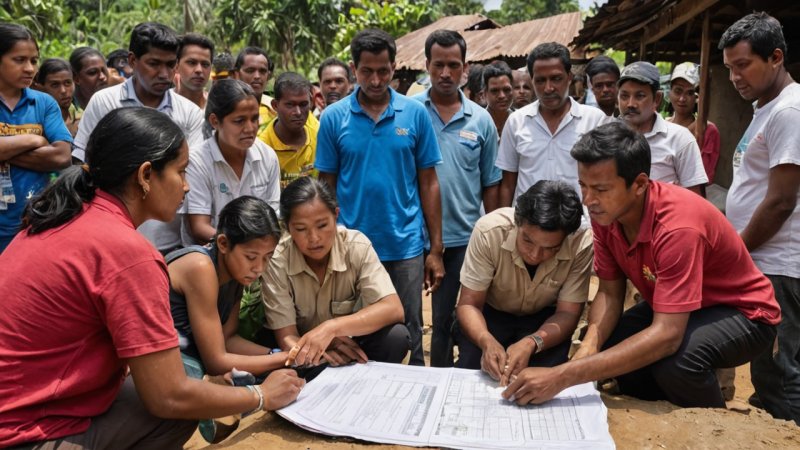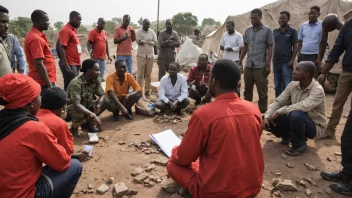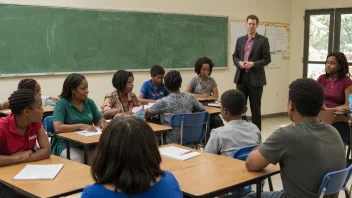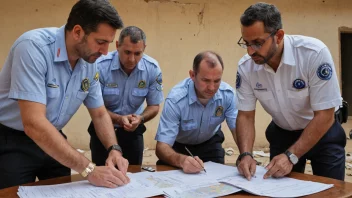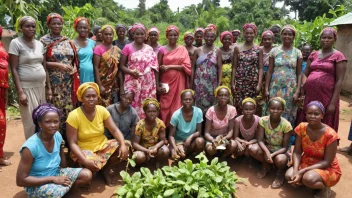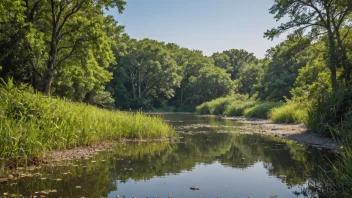In the face of natural disasters, the response mechanisms of Non-Governmental Organizations (NGOs) often play a crucial role in providing immediate aid and long-term recovery solutions. However, the effectiveness of these efforts is significantly enhanced when NGOs collaborate closely with local communities. This partnership is not just beneficial; it is essential for ensuring that relief efforts are culturally appropriate, contextually relevant, and truly responsive to the needs of those affected. By harnessing local knowledge, resources, and networks, NGOs can deliver aid more efficiently and sustainably, ultimately empowering communities to rebuild their lives.
Understanding the Landscape of Disaster Relief
Disasters can strike at any moment, often leaving communities vulnerable and in dire need of support. The landscape of disaster relief is complex, involving various stakeholders, including government agencies, international organizations, and grassroots groups. NGOs are pivotal in this ecosystem, often serving as the bridge between affected communities and larger relief efforts. They bring expertise in logistics, healthcare, and psychosocial support, but their success hinges on their ability to engage and collaborate with local populations.
The Power of Local Knowledge
One of the greatest assets that local communities possess is their intimate knowledge of the environment and social dynamics. They understand the geography, the cultural practices, and the existing social networks that can be leveraged for effective disaster response. When NGOs tap into this local knowledge, they can design interventions that are more aligned with the community's needs. For instance, during a flood, local residents may know which areas are most at risk and how to navigate the landscape safely, providing invaluable insight for NGOs planning relief distributions.
Building Trust and Relationships
Trust is a cornerstone of any successful collaboration. NGOs often enter communities as outsiders, and building trust takes time and effort. Engaging local leaders and stakeholders in the planning process fosters transparency and inclusivity, which can lead to stronger relationships. When communities feel heard and respected, they are more likely to engage with NGOs, share critical information, and participate actively in recovery efforts. This trust also helps NGOs to better understand the community’s priorities, ensuring that aid is not only accepted but welcomed.
Empowering Communities Through Participation
Collaboration between NGOs and local communities is not merely about delivering aid; it is about empowering communities to take charge of their recovery. Encouraging community participation in decision-making processes allows residents to express their needs and preferences. This empowerment can manifest in various ways, such as involving community members in the distribution of aid or in the planning of rebuilding efforts. When communities have a say in the process, they invest in the outcomes, leading to a more sustainable recovery.
Creating Sustainable Solutions
Disaster relief should not be a one-time event; it should pave the way for long-term resilience. NGOs that collaborate with local communities can develop sustainable solutions that address the root causes of vulnerability. For example, if a community is prone to flooding, NGOs can work with residents to implement flood mitigation strategies, such as improving drainage systems or restoring wetlands. By focusing on sustainable practices, NGOs help communities become more resilient to future disasters, reducing the cycle of dependency on external aid.
Case Studies of Successful Collaborations
Numerous case studies highlight the success of NGO and local community collaborations in disaster relief. For instance, after the 2010 earthquake in Haiti, many NGOs worked closely with local organizations to provide immediate relief and long-term reconstruction. By involving local builders and artisans in the rebuilding process, they not only ensured that structures were culturally appropriate but also created jobs and stimulated the local economy. Another example is the response to Typhoon Haiyan in the Philippines, where NGOs partnered with local fishermen to develop sustainable fishing practices that helped restore livelihoods while also contributing to environmental protection.
Challenges to Collaboration
Despite the clear benefits, collaboration between NGOs and local communities is not without its challenges. Differences in priorities, communication barriers, and varying levels of trust can hinder effective partnerships. Additionally, NGOs may sometimes have rigid frameworks that do not allow for the flexibility required to adapt to local contexts. It is essential for NGOs to approach collaborations with an open mind and a willingness to learn from local partners, recognizing that they are not just service providers but facilitators of community-led initiatives.
How Individuals Can Get Involved
Individuals looking to make a difference can play a role in fostering collaboration between NGOs and local communities. Volunteering with local organizations, participating in community meetings, and advocating for inclusive policies are all ways to support these partnerships. Additionally, individuals can educate themselves about the specific challenges faced by communities in disaster-prone areas and amplify their voices in broader discussions about disaster relief and recovery.
Conclusion
The collaboration between NGOs and local communities is not just a best practice; it is a vital component of effective disaster relief. By recognizing the importance of local knowledge, building trust, empowering communities, and creating sustainable solutions, NGOs can enhance their impact and help communities recover more effectively. As we face an increasingly uncertain future marked by climate change and natural disasters, fostering these partnerships will be essential for building resilient societies capable of withstanding and recovering from the challenges ahead. Together, NGOs and local communities can turn the tide on disaster relief, transforming it from a temporary response into a pathway for sustainable development and empowerment.
